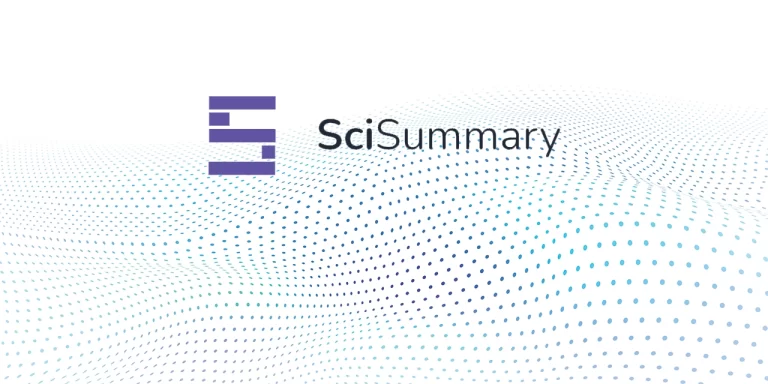As a webinar host, opting for a free version of a webinar software seems like an attractive option.
You can host all of your important webinars without breaking the bank. Right?
Well, the answer isn’t so clear cut.
We break it all down in this article.
Should You Use Free Webinar Software in 2025?
Free webinar software offer cost savings, ease of use, and wider accessibility, making them a great choice for beginners, small teams, or those running webinars with limited budgets. They allow you to:
- Save money and reinvest in content or marketing
- Reach a global audience by removing financial barriers
- Quickly launch webinars without technical complexity
- Build brand authority by delivering value with minimal tools
However, free software comes with trade-offs:
- Limited features like no breakout rooms, custom branding, or advanced analytics
- Lower reliability and potential tech issues during live events
- Smaller audience caps, which can restrict growth
- Branding limitations that affect professionalism
- Weaker security, raising data privacy concerns
Bottom Line
Free webinar tools are ideal for small-scale events or testing the waters. But if you’re serious about growth, lead generation, and delivering a polished, secure experience, investing in a paid platform is definitely worth the cost.
What Are Webinars?
Webinars have become an essential tool for businesses, educators, and individuals to connect with their audience, share knowledge, and promote products.
A webinar is a virtual event that allows hosts to present information, demonstrate products, and interact with attendees in real-time.
With the advancement of technology, hosting webinars has become more accessible and convenient.
Various webinar platforms and tools are available, offering a range of features to enhance the webinar experience.
Impact on Marketing Strategy
Webinars have become a cornerstone of modern marketing strategies.
According to Hubilo, 95% of marketers consider webinars essential to their overall marketing strategy. Webinars are particularly effective in the B2B space, where they facilitate lead generation and disseminate knowledge without the logistical hurdles associated with in-person events (Lyyti).
Marketing teams can leverage webinars to enhance audience engagement and streamline the experience for presenters.
The ability to reach a global audience in real time sets webinars apart from other marketing channels.
They allow businesses to deliver interactive content that can educate and engage attendees, making them a critical component of comprehensive marketing plans.
Generating High-Quality Leads
Generating high-quality leads is one of the standout benefits of webinars.
According to Hubilo, 73% of marketers agree that webinars are the most effective channel for generating high-quality leads.
Webinars bridge the gap between education and promotion, providing interactive content that resonates with potential customers.
Regularly organizing webinars allows businesses to educate both existing and potential customers on various topics, offering valuable insights and direct feedback through interactive elements like Q&A sessions and chat functions.
This feedback can then be used to refine products, services, and marketing strategies.
Automated email reminders play a crucial role in managing attendee communications and ensuring high attendance rates, which is essential for maximizing the impact of your webinars.
Moreover, webinars can significantly boost brand awareness and establish the hosting organization as an authority in its field.
Metric | Percentage |
|---|---|
Marketers viewing webinars as essential | 95% |
Marketers seeing webinars as top lead generation channel | 73% |
Another effective strategy is using white papers in conjunction with webinars.
This dual approach combines in-depth written content with interactive presentations, enhancing lead generation efforts.
Understanding the best practices for white paper campaigns can further strengthen the effectiveness of webinars.
Webinars can also increase brand awareness and lead generation by positioning the host as an industry leader.
By focusing on educational content rather than overt promotion, webinars can attract larger audiences and build deeper lead pools (Medianova).
Utilizing these insights and strategies can ensure that webinars not only fit seamlessly into your marketing strategy but also serve as a potent tool for business growth.
Advantages of Using Free Webinar Software
Cost Savings and Budget Efficiency
By utilizing free software, you can allocate your budget to other crucial areas, such as content development or marketing strategies, enhancing the overall quality and reach of your webinar.
Accessibility and Wider Audience Reach
Using free webinar software can help you reach a broader audience, as it removes the financial barrier for attendees.
This inclusivity can attract participants from various backgrounds and locations, increasing the diversity and size of your audience.
Additionally, free webinar software can also be used to host private events, providing customizable features for exclusive gatherings.
The ability to connect with a global audience without additional costs can significantly boost your event’s impact and visibility.
Benefit | Description |
|---|---|
Cost-effective | Saves money that can be reinvested into other webinar aspects. |
Wider Audience Reach | Attracts a diverse and larger audience by eliminating financial barriers. |
Flexibility and Ease of Use
Free webinar platforms often offer a user-friendly interface, making them accessible for both hosts and attendees.
This ease of use ensures that your webinar runs smoothly, allowing you to focus on delivering valuable content rather than worrying about technical issues.
The flexibility of these platforms can also accommodate various webinar formats, from live sessions to pre-recorded content, catering to different audience preferences.
Building Brand Authority
Finally, (although this may be a stretch), hosting a successful webinar on a free platform could demonstrate your ability to deliver valuable content without relying on expensive tools.
Even free platforms with essential features can help build brand authority by delivering high-quality content.
This can enhance your reputation as a resourceful and knowledgeable host, building your brand authority in the industry.
After all, the most important thing is to provide high-quality content. Doing so can establish yourself as a thought leader, attracting more attendees to future events.
Downsides of Using Free Webinar Software

As a webinar host, opting for free webinar software might seem appealing, but it can present several challenges that could hinder the success of your virtual events.
Upgrading to paid plans can provide access to advanced features and functionalities that are not available in the free versions, ensuring a more professional and seamless experience.
It really begs the question: is free webinar software worth it?
Limited Features and Functionality
Free webinar software often comes with limited features compared to paid versions, typically offering only basic webinar features such as reactions, recording, and live streaming.
As a host, you might find yourself restricted by the lack of advanced features such as customizable registration forms, breakout rooms, or high-quality video and audio capabilities.
These limitations can affect the professionalism and engagement level of your webinars, making it difficult to deliver a seamless and interactive experience for your audience.
Reliability and Technical Issues
The reliability of free webinar platforms can be a significant concern. These platforms may not offer the same level of technical support or stability as their paid counterparts.
As a result, you might encounter unexpected technical issues during your live sessions, such as connectivity problems or software glitches, which can disrupt the flow of your presentation and frustrate attendees.
Additionally, free platforms may struggle with maintaining high audio quality, affecting the overall user experience.
Limited Audience Capacity
Free versions of webinar software often come with restrictions on the number of participants you can host.
This limitation can be a major drawback if you’re looking to reach a larger audience or if your webinar unexpectedly attracts a high number of registrants.
Free webinar software is often suitable for small webinars due to participant capacity limitations.
Being unable to accommodate all interested participants can lead to missed opportunities for engagement and lead generation.
Branding and Customization Constraints
With free webinar software, you may have limited options for branding and customization. The inability to fully customize your webinar interface and materials can make it challenging to maintain a consistent brand image.
Paid software typically allows for more extensive customization, helping you create a more cohesive and professional presentation that aligns with your brand identity.
Additionally, paid platforms offer custom landing pages that enhance user experience through personalized branding.
Data Security and Privacy Concerns
Free webinar platforms might not offer the same level of data security and privacy as paid services.
As a host, safeguarding your attendees’ information is crucial, and using a platform with robust security measures is essential to protect their data.
Paid software often includes enhanced security features, such as end-to-end encryption, which can provide peace of mind for both you and your participants.
While free webinar software can be tempting, the potential downsides may outweigh the cost savings.
Investing in a paid platform can provide the advanced features, reliability, and security necessary to deliver a high-quality, professional webinar experience.
Webinar Platforms and Features
Choosing the right webinar platform is crucial to ensure a successful and engaging experience.
Various platforms are available, each offering unique features and functionalities.
When selecting a webinar platform, consider factors such as ease of use, customization options, interactive tools, and integration with other tools and services.
Webinar Platforms
Popular webinar platforms include Livestorm, WebinarJam, EasyWebinar, and Demio.
These platforms offer a range of features, including screen sharing, video conferencing, and interactive tools.
Some platforms also offer advanced features, such as automated webinars, customizable registration forms, and detailed analytics. When choosing a webinar platform, consider your specific needs and requirements.
Webinar Features
Webinar features can enhance the overall experience and engagement.
Interactive tools, such as polls, Q&A sessions, and chat boxes, allow attendees to participate and engage with the host and other attendees.
Customizable registration forms and landing pages can help hosts promote their webinars and track attendee information. Advanced features, such as automated webinars and detailed analytics, can help hosts optimize their webinars and improve their overall strategy.
Consider the features that are essential to your webinar goals and choose a platform that offers them.
Best Practices for Successful Webinars

Creating successful webinars requires thorough planning and effective engagement strategies. Following these practices can help maximize the value of free webinar platforms and yield significant business benefits.
Using pre-recorded webinars allows for delivering consistent and polished content, making it easier to create evergreen material that can be strategically released over time.
Preparation and Planning
Proper preparation is key to hosting an impactful webinar. This involves several crucial steps:
- Define the Target Audience: Identifying the target audience helps tailor the content to meet their specific needs and interests. This step is vital for maintaining relevance and engagement.
- Choose Engaging Topics: Select topics that resonate with the audience and add value to their experience. Inviting expert speakers can further enhance the attractiveness of the content (vFairs), making it compelling for participants.
- Set Clear Goals: Establish clear objectives for the webinar, such as lead generation or brand awareness. This helps in creating focused and outcome-driven presentations.
- Involve Other Departments: Collaborate with various departments to provide comprehensive perspectives and enrich the webinar content.
- Prepare Strong Presentations: Robust presentations that are well-researched and visually engaging play a critical role in holding the audience’s attention. Conducting training sessions ensures that presenters are well-prepared and confident.
- Check Technical Specifications: Ensuring the reliability of the webinar platform and other technical aspects prevents disruptions during the event. It is essential to test all equipment and internet connections beforehand.
Engagement and Interactivity with Interactive Tools
Sustaining audience interest throughout the webinar is challenging but achievable through interactive elements.
- Incorporate Interactive Elements: Utilize features like live polls, quizzes, and real-time Q&A sessions to make the webinar interactive. These activities promote active participation and enhance information retention (vFairs). Platforms designed for interactive webinars offer these tools to create memorable and effective webinar experiences.
- Invite Knowledgeable Speakers: Expert speakers draw participants’ attention and lend credibility to the content. Opt for speakers who can deliver engaging and insightful presentations.
- Create an Interactive Learning Experience: Design the webinar to be more of a dialogue than a monologue. Encourage participants to ask questions and provide feedback during the session.
- Engage with Content: The content should be concise and captivating. Focus on delivering the key points clearly and engagingly.
- Pre-Webinar Engagement: Foster anticipation by engaging with potential attendees before the event through emails and social media. This builds a connection and encourages higher attendance rates.
Following these best practices ensures that webinars not only draw in audiences but also provide them with a rich, engaging experience.
Proper planning and dynamic interaction are essential for leveraging the full potential of free webinar software, ensuring a high return on investment.
Utilizing Webinars Effectively
Webinars are a powerful tool for businesses seeking to engage their audience and generate leads. Proper utilization of this medium can significantly enhance the effectiveness and reach of marketing strategies.
Choosing the right webinar solution is crucial to maximize lead generation and audience engagement. This section will cover how professionals can retain audience attention and use webinars as a lead generation tool.
Retaining Audience Attention
Retaining viewer attention during a webinar is crucial for maximizing its impact. Webinars are effective in holding the audience’s attention due to their engaging and interactive nature, allowing for longer durations of focused viewing (Hubilo).
Employing interactive elements such as polls, quizzes, and Q&A sessions can further enhance engagement.
Key strategies to retain attention during webinars include:
- Interactive Polls: Conducting polls at regular intervals to maintain interest.
- Live Q&A: Allowing attendees to ask questions in real-time.
- Visual Aids: Using slides, videos, and graphics to break monotony and incorporate video content to keep the audience engaged.
Lead Generation Tool
One of the primary advantages of webinars is their potential for lead generation.
Companies can save time by consolidating learning sessions or product demos into a single educational event, thereby attracting potential leads who are interested in the subject matter.
Webinars can serve as a platform for showcasing expertise, thus positioning the company as a thought leader in its field and prompting participants to take action.
Several lead generation techniques in webinars include:
- Registration Page: Utilizing a customizable registration page to collect attendee information prior to the event. This allows organizers to maintain brand consistency through personalized branding and design elements, enhancing the overall experience for attendees and making the registration process more professional and engaging.
- Follow-up Surveys: Gathering feedback and additional contact details post-webinar.
- Exclusive Offers: Providing special deals or access to premium content for attendees.
A summary of these techniques is displayed in the table below:
Lead Generation Technique | Description |
|---|---|
Registration Page | Collect attendee information with a customizable registration page |
Follow-up Surveys | Gather feedback and contact details post-webinar |
Exclusive Offers | Provide special deals to attendees |
To learn about the best free tools to facilitate your webinar preparations and engagement, visit our article on top free webinar tools.
Thorough preparation and strategic execution ensure that webinars not only retain audience attention but also serve as effective lead generation tools.
Enhancing Business Through Webinars

Webinars have the potential to significantly enhance business growth. When leveraged effectively, they can serve as powerful tools for educating customers and demonstrating products.
Additionally, webinars are versatile for hosting online training sessions, making them suitable for a variety of users including businesses and educators.
Educating Customers
Webinars are ideal for educating both existing and potential customers.
By organizing educational sessions on various subjects, businesses offer valuable insights that can directly influence customer decisions.
This educational approach allows companies to address customer queries in real-time, providing a platform for clear communication.
Additionally, webinars enable direct feedback from participants via chat, aiding in the refinement of products and marketing strategies.
Using multiple webinar formats caters to different learning preferences, making it easier to engage a diverse audience.
Holding regular webinars on industry topics can help position a business as a thought leader. Delivering valuable information builds authority and credibility, as noted by (Hubilo).
By answering questions and solving problems, businesses establish themselves as reliable sources of knowledge.
Product Demos and Education
Webinars are highly effective for product demonstrations.
They allow companies to showcase products’ features and benefits in detail, often leading to increased sales. Having a live demonstration can persuade potential customers and help existing ones better utilize the product.
This approach fosters engagement and interaction, encouraging participants to share their experiences and challenges (Lyyti).
Video integration is crucial for creating dynamic and engaging product demos, as it allows for seamless incorporation of multimedia content, such as slideshows and videos.
Combining educational content with product demos in a single session saves time while providing comprehensive knowledge to participants.
This method benefits all parties involved, as it consolidates learning and engagement into one focused event.
Effective use of webinars for product education not only boosts understanding but also highlights a company’s expertise.
Below is a table summarizing key aspects of using webinars for education and product demos:
Benefit | Description | Source |
|---|---|---|
Educating Customers | Provides insights and addresses queries in real-time, refining offerings and strategies. | |
Product Demos | Detailed showcase of features and benefits, increasing sales potential. | |
Positioning as Thought Leader | Builds authority by delivering valuable information and solving audience problems. | |
Time Efficiency | Combines educational sessions and product demos into one, saving time and benefiting participants. |
Measuring Webinar ROI
Understanding the return on investment (ROI) for webinars is essential for businesses looking to assess the effectiveness of their webinar marketing efforts.
Let’s explore the methods to calculate ROI and identify key performance indicators (KPIs) that help measure the success of webinars.
Advanced analytics play a crucial role in tracking detailed viewer engagement metrics, such as drop-off points and click-through rates, which help refine content to enhance its effectiveness and maximize audience interaction.
Calculating Return on Investment
Webinar ROI is a metric that determines the profitability of webinars by measuring the success of webinar marketing efforts. The formula to calculate webinar ROI is:
![]()
For example, if a company spends $1,000 on hosting a webinar and generates $4,000 in sales, the ROI would be:
![]()
This metric helps in evaluating how much each webinar contributes to the business by comparing the revenue generated against the total costs.
It is also important to evaluate the platform offers to ensure they align with business goals.
Key Performance Indicators

Tracking the ROI of webinars involves establishing and monitoring relevant key performance indicators (KPIs).
These KPIs provide insights into specific aspects of webinar performance and help in making informed decisions about resource allocation.
Considering the attendee perspective is crucial to enhance engagement and interaction during webinars, making the experience more enjoyable and straightforward for participants.
Important KPIs to Track
- Registration Rate: The number of people who signed up for the webinar compared to the total number of people invited.
- Attendance Rate: The percentage of registrants who attended the webinar.
- Engagement Rate: The level of participant interaction during the webinar, such as polls, questions, and chat activity.
- Conversion Rate: The percentage of attendees who took a desired action, such as making a purchase or signing up for a service.
- Average Viewing Time: The average time attendees spent watching the webinar, indicating how engaging the content was.
- Lead Generation: The number of new leads generated from the webinar.
- Recording Webinar Sessions: Recording webinar sessions is crucial for repurposing content and extending audience reach. Select platforms with dependable recording and playback features to allow attendees to access these sessions at their convenience.
KPI | Description |
|---|---|
Registration Rate | Measuring the effectiveness of promotional strategies by calculating the number of sign-ups. |
Attendance Rate | Determining the percentage of registrants who attended the event. |
Engagement Rate | Measuring participant interaction levels during the session. |
Conversion Rate | Assessing the percentage of attendees who converted into customers or took desired actions. |
Average Viewing Time | Evaluating content engagement by measuring how long attendees watched. |
Lead Generation | Quantifying the number of new leads acquired through the webinar. |
Recording Webinar Sessions | Ensuring content can be repurposed and accessed later by recording sessions. |
Tracking these KPIs allows businesses to measure the success of webinar strategies and make informed decisions about future webinars (WebinarNinja).
Additionally, KPIs provide insights into audience behavior, which helps refine content for increased engagement and conversion.
By measuring ROI and monitoring these KPIs, businesses can enhance their webinar strategies, justify budget allocation, and ultimately achieve better results with their webinar efforts.
Keep these metrics in mind when evaluating the effectiveness of your webinar tool requirements.
Leveraging Webinars for Business Growth
Webinars have emerged as a pivotal tool for businesses aiming to foster growth. They serve multiple roles, from enhancing brand positioning to conducting market research.
Selecting the best webinar software is crucial to enhance audience engagement and streamline the experience.
Understanding how to leverage these tools effectively can result in substantial benefits for any organization.
Brand Positioning
Webinars play a critical role in brand positioning. Companies can use webinars to project themselves as thought leaders in their industry.
By delivering insightful information and addressing audience questions, businesses can establish authority and credibility.
This not only builds trust but also positions the brand as a leader. According to Hubilo, providing valuable answers and solving audience problems through webinars help build authority.
High quality audio is essential in delivering professional and engaging content during webinars, ensuring clear communication and a superior user experience.
The educational content shared during webinars, such as product demos and tutorials, can further enhance the company’s reputation.
This encourages user participation and interaction, allowing the brand to connect more deeply with its audience.
Market Research and Analysis

Webinars are also invaluable for market research. They provide a unique opportunity to gather real-time feedback from participants, which can be analyzed for insights into customer preferences and behaviors.
This data can inform product development and marketing strategies, ensuring they align with the needs of the target audience.
Using a desktop app for reliable data collection and analysis can enhance the efficiency and accuracy of these insights.
Interactive features such as polls and Q&A sessions can be used to collect quantitative and qualitative data.
By analyzing these responses, businesses can identify trends and make data-driven decisions. This approach not only enhances product offerings but also strengthens customer relations.
According to Medianova, webinars can boost brand awareness and lead generation by attracting a larger audience.
This method of indirect brand promotion helps build a rich lead pool, essential for business growth. For more information on selecting the right tools, check out our article on top free webinar tools.
Understanding the Return on Investment (ROI) is crucial when leveraging webinars for growth. Calculating the ROI involves assessing the cost of webinar tools, promotions, and the resultant impact on sales and leads.
Leveraging webinars effectively requires understanding their multifaceted roles in brand positioning and market research.
By utilizing these tools strategically, businesses can achieve significant growth and solidify their standing in the market.
Promoting Business Growth with Webinars
When used effectively, webinars can be a powerful tool for driving business growth. Live webinars offer real-time engagement and audience interaction, making them an efficient and user-friendly platform for hosting events.
Let’s explore two crucial aspects: effective promotion strategies and creating engaging content.
Effective Promotion Strategies
An effective promotion strategy is critical for ensuring the success of a webinar and maximizing its reach.
Here are some key tactics:
- Utilize Existing Communication Channels: Promote the webinar through company newsletters, social media platforms, and email marketing. This ensures the message reaches both existing and potential clients. According to Medianova, a diverse mix of channels increases visibility and potential attendance.
- Offer Incentives: Providing incentives such as exclusive content, PDFs, or e-books can increase registration rates. These bonuses may encourage more individuals to sign up and attend.
- Leverage Influencers and Partnerships: Collaborate with industry influencers and partners to promote the webinar. Their endorsement adds credibility and can attract a larger audience due to their established follower base.
- Targeted Advertising: Use pay-per-click (PPC) campaigns and social media ads to target specific demographics that align with your business goals. This helps in reaching a more relevant audience and increases the chances of engaging potential leads.
- Timely Reminders: Sending reminders a few days before, a day before, and an hour before the webinar keeps the event top-of-mind for registrants. It can significantly reduce no-show rates.
Engaging Content Creation
Creating content that keeps your audience engaged throughout the webinar is vital.
Here are some best practices:
- Visual Appeal: Use high-quality visuals, slides, and video clips to make the presentation more engaging. Ensure that the audio and video quality is top-notch to provide a professional feel and seamless experience. Visual elements can help in breaking the monotony and maintaining interest.
- Interactive Elements: Incorporate polls, surveys, and Q&A sessions to make the webinar interactive. This not only keeps the audience engaged but also provides valuable insights into their preferences and queries.
- Relevant Topics: Focus on topics that are relevant and valuable to your target audience. Offering informative content on industry trends, challenges, and solutions can position the brand as an industry leader.
- Storytelling: Utilize storytelling techniques to make the content more relatable. Sharing customer success stories or case studies can highlight the practical applications of your products or services.
- Concise and Structured: Keep the content concise and well-structured. A clear agenda, starting on time, and sticking to the schedule ensure that the audience remains focused and engaged.
By combining effective promotion strategies with engaging content creation, businesses can maximize the value of their webinars and foster significant growth.
Frequently Asked Questions
Are free webinars worth it?
Free webinars can be incredibly valuable, especially for businesses and individuals looking to engage with a wide audience without incurring high costs. They offer a cost-effective way to share information, generate leads, and build brand authority. However, it’s important to be aware of the limitations, such as fewer features and potential technical issues, compared to paid options.
What is the best free webinar platform?
The best free webinar platform depends on your specific needs and goals. Popular options include Zoom, Webex, and Google Meet, which offer essential features like screen sharing, video conferencing, and interactive tools. Each platform has its strengths, so it’s advisable to explore their free versions to determine which best suits your requirements.
Can you host a webinar for free?
Yes, you can host a webinar for free using various platforms that offer free plans. These platforms typically provide basic webinar features, allowing you to connect with your audience without any financial investment. However, keep in mind that free versions may have limitations on participant capacity and advanced features.
Is Zoom webinar worth it?
Zoom is a popular choice for webinars due to its user-friendly interface and robust features. It offers a free plan with essential features and paid plans with advanced capabilities like larger participant capacity and enhanced security. For many, the investment in Zoom’s paid plans can be worth it for the added functionality and reliability.
What are the downsides of using free webinar software?
Free webinar software often comes with limitations such as fewer customization options, lower participant capacity, and potential technical issues. These constraints can affect the professionalism and effectiveness of your webinars. For a more seamless experience, consider investing in a paid platform that offers advanced features and better support.






